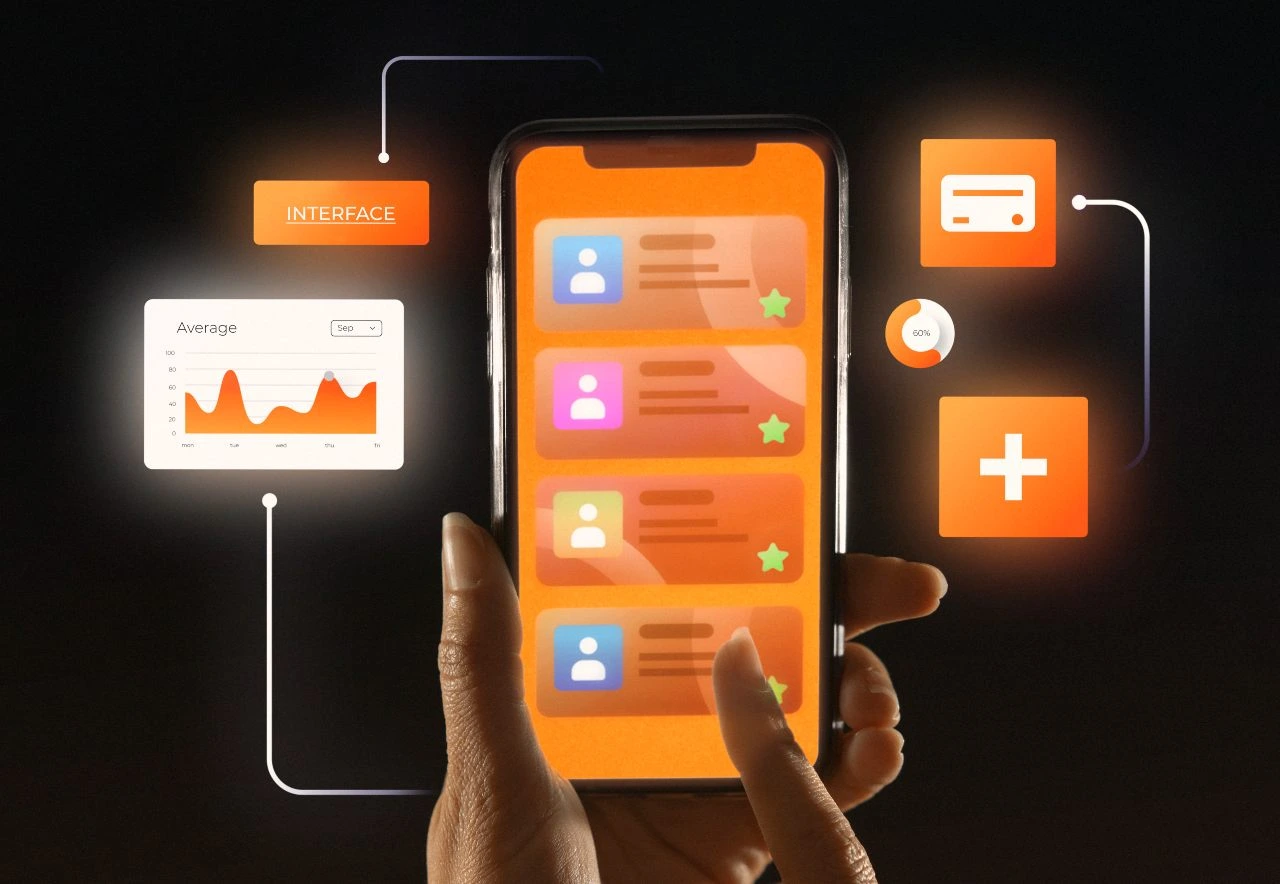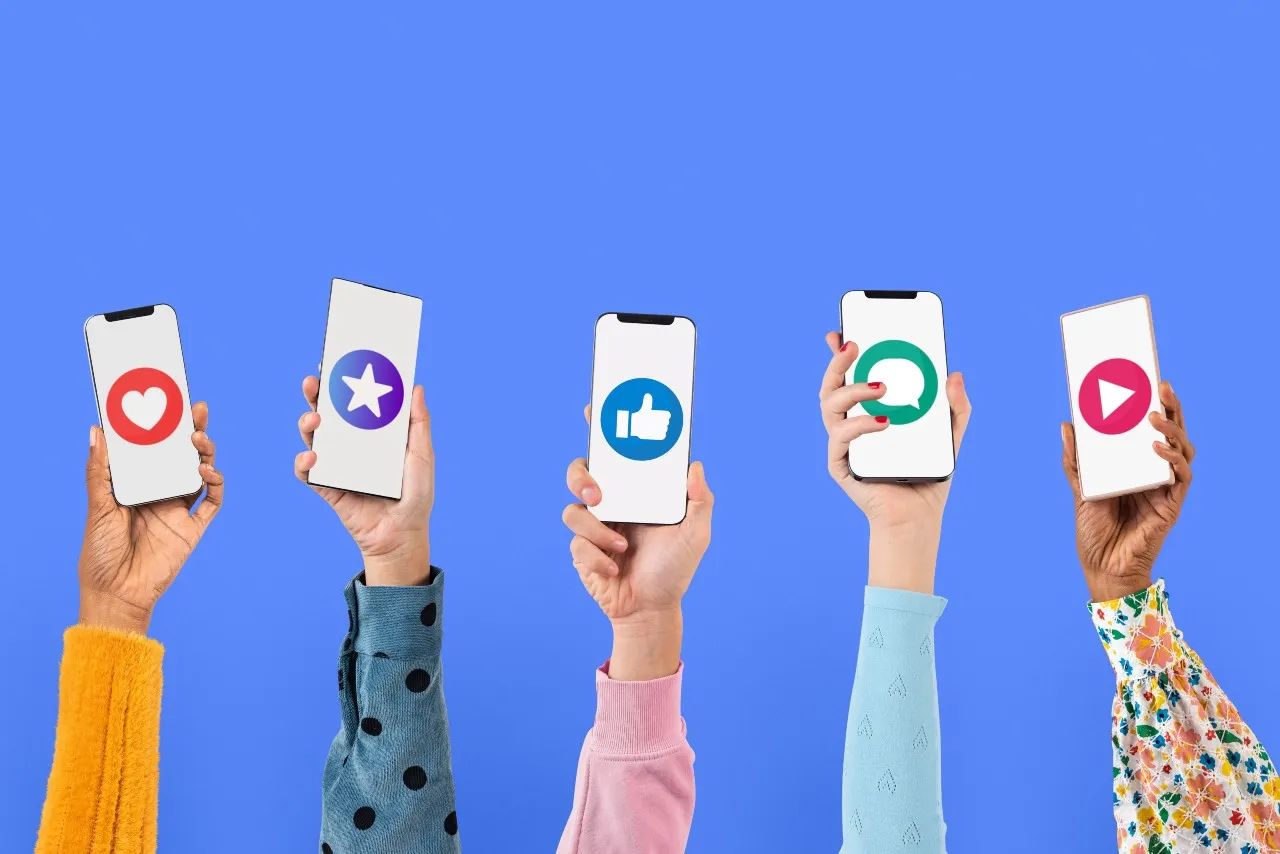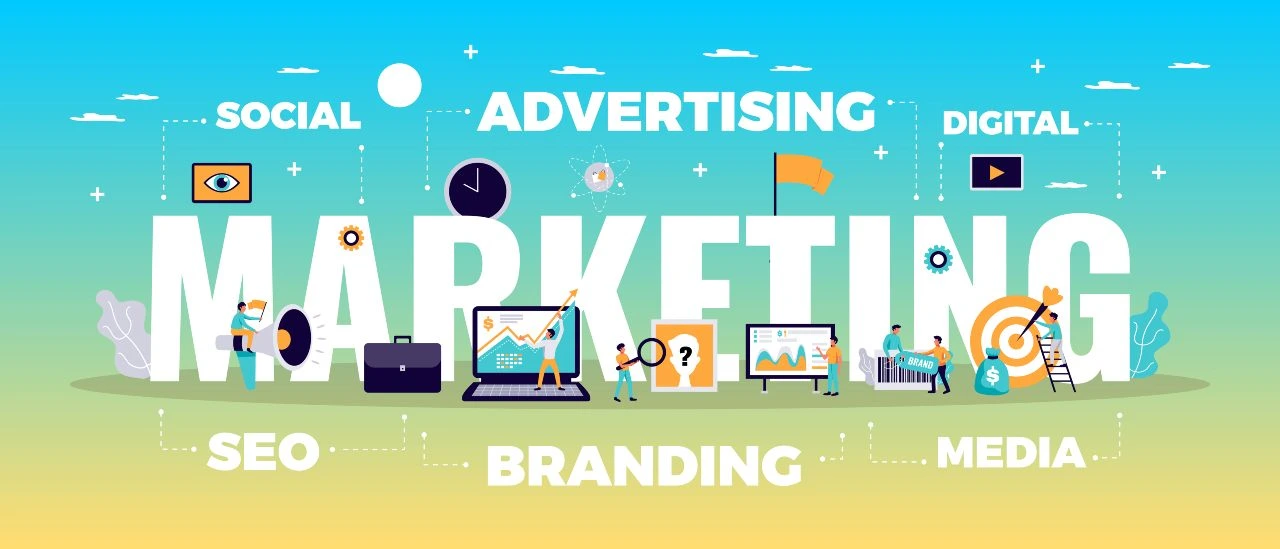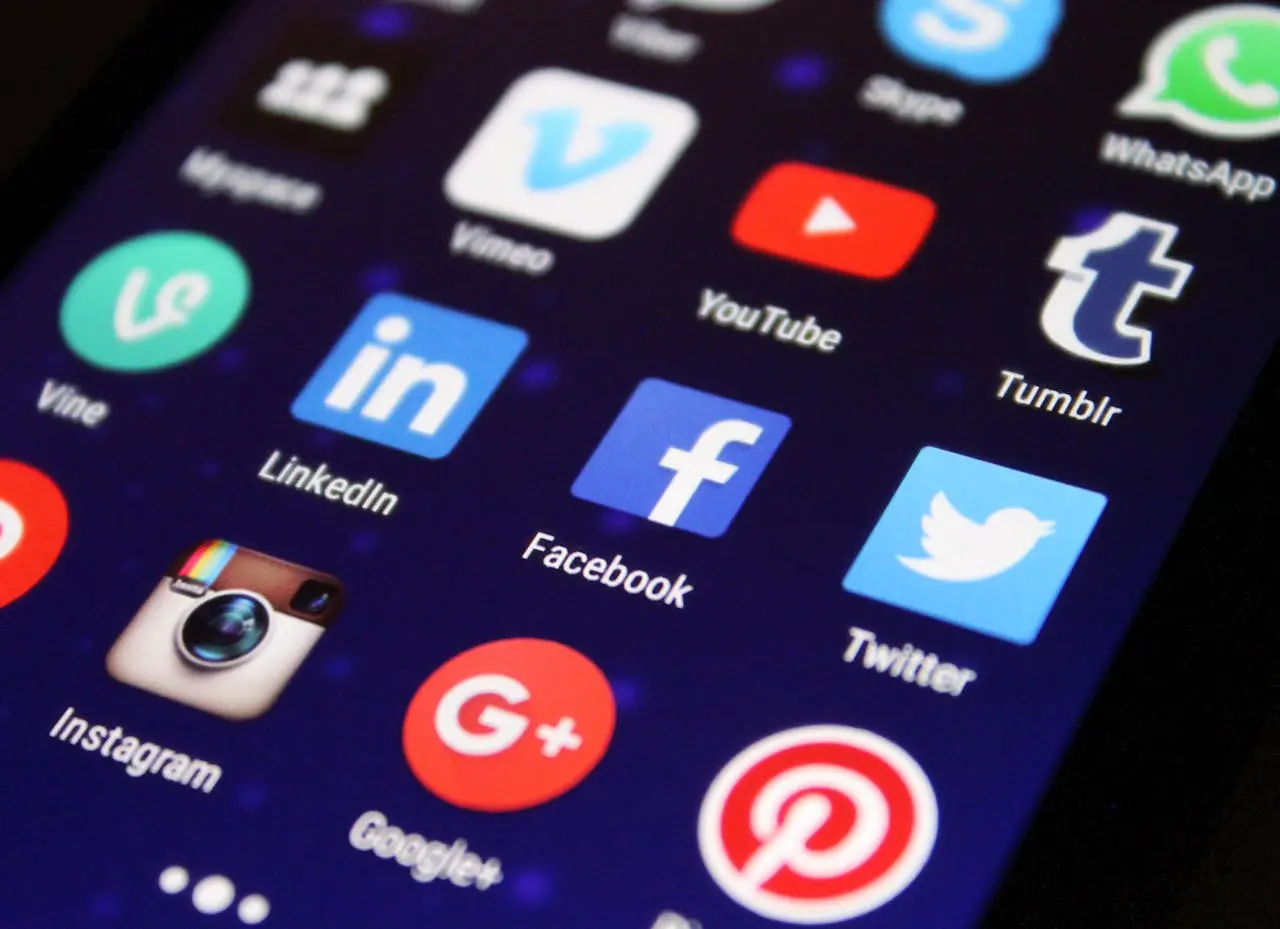“Mobile app marketing is more dynamic than ever.” To stay ahead, businesses need to keep pace with the latest shifts and leverage emerging technologies. But with so much noise in the digital landscape, how do you discern fleeting fads from real game-changers?
This article dives deep into the most impactful mobile app marketing trends poised to reshape how businesses connect with and engage users. From AI-driven personalization and the evolution of location-based marketing to the immersive potential of AR/VR and strategies for minimizing cart abandonment, we’ll explore the key strategies that will define success in the ever-evolving world of mobile.
Get ready to discover how these trends can revolutionize your mobile app marketing efforts and drive unprecedented growth.
Leveraging AI and Machine Learning to Elevate Mobile App Marketing Strategies
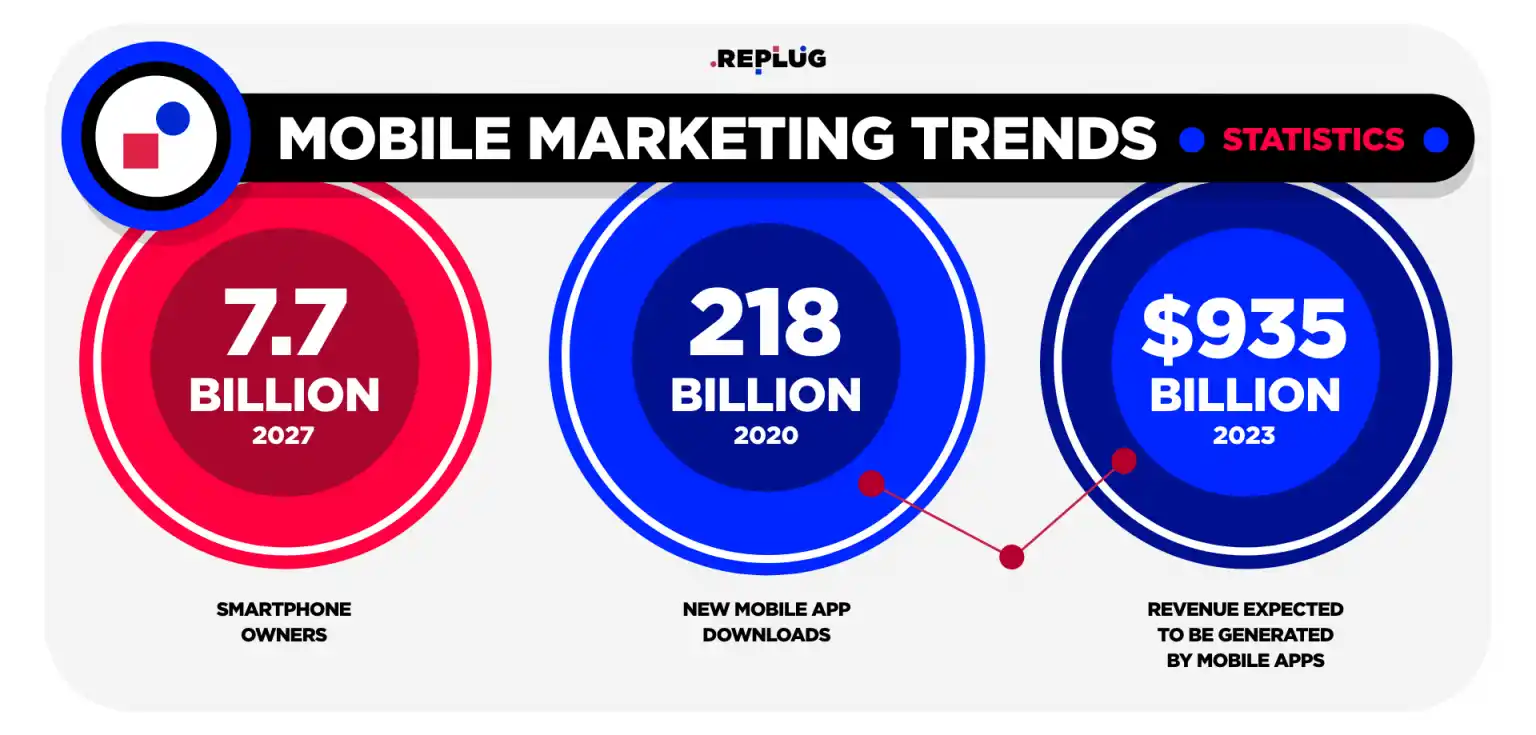
Source: REPLUG
Artificial intelligence (AI) and machine learning (ML) aren’t just buzzwords—they’re redefining how mobile app marketers connect with their audiences. By analyzing vast amounts of data, these technologies unlock unprecedented levels of personalization, foster predictive insights, and streamline customer support. As competition in the mobile app space intensifies, brands utilizing AI and ML tools gain a competitive edge, delivering experiences so intuitive that they feel tailor-made for each user.
- Unveiling user preferences at scale: AI and ML analyze extensive datasets to uncover intricate user patterns, making it possible to create hyper-personalized content and recommendations that would otherwise go unnoticed by human analysis. Source
- Proactive marketing through predictive analytics: These technologies leverage historical data to forecast trends and behaviors, empowering marketers to anticipate customer needs and preemptively optimize their strategies for better results. Source
- AI-driven customer support: Chatbots and virtual assistants powered by AI offer round-the-clock assistance, ensuring seamless user experiences while guiding customers through their engagement or purchasing journeys. Source
- Precision in ad targeting: AI identifies granular user insights to build detailed profiles, ensuring ads are specifically targeted to the most relevant audiences. This minimizes wasted ad spend and maximizes campaign effectiveness. Source
- Real-time dynamic content: AI-powered tools generate personalized content on the fly, adapting ad messaging and imagery to fit individual user segments, which significantly boosts engagement rates. Source
Key Takeaway
Marketers who integrate AI and ML into their mobile strategies are positioning themselves as pioneers in offering data-driven, seamless, and personalized user experiences. The ability of AI to interpret behavioral trends, automate repetitive tasks, and enhance engagement provides a cost-effective solution for improving ROI and driving user loyalty. However, as these technologies become standard, the key differentiator will be how well brands utilize their insights.
Pro Tip:
To fully unlock the potential of AI in mobile app marketing, invest in tools that integrate seamlessly with your existing data sources. Prioritize customer privacy while gathering insights, and experiment with AI-driven features like real-time testing or recommendation engines to deliver campaigns that are both impactful and ethical.
The Transformative Role of AI in Mobile Marketing Performance
Artificial Intelligence (AI) isn’t just the latest buzzword—it’s reshaping the mobile marketing landscape with its unparalleled ability to process and analyze data at scale. As mobile marketing becomes more customer-centric, understanding and anticipating user behavior is vital for staying competitive. AI bridges the gap by uncovering hidden trends, predicting user actions, and enabling hyper-personalized experiences that traditional methods simply can’t match.
- AI assists in data collection through multiple channels, personalizes customer experiences, and helps in content creation. Source
- AI enables the analysis of big data at scale for a fraction of the effort and cost, making it more accessible for businesses to gain actionable insights. Source
Key Takeaway
AI’s integration into mobile marketing trends is not just about automation—it’s about smarter decision-making. With AI-driven analytics, businesses can optimize the customer journey, from designing highly relevant app experiences to crafting campaigns that resonate. The result? Higher engagement, better ROI, and a distinct edge over competitors still relying on guesswork.
Pro Tip:
To get the most from AI in mobile marketing, focus on building a strong data foundation. Ensure your customer data is accurate, clean, and well-organized. Invest in AI-powered platforms that align with your goals and emphasize team training to bridge any skills gap—technology alone won’t deliver results without people who know how to use it effectively.
Harnessing the Power of LLMs to Elevate Conversational AI in Mobile Apps
Conversational AI has quickly become a core component of customer engagement in mobile app marketing. However, many traditional natural language processing (NLP) systems struggle to keep up with user demands, particularly when it comes to grasping context and deciphering new terminology. Enter large language models (LLMs), which are not only redefining the boundaries of conversational AI but are also enabling brands to deliver hyper-personalized, intuitive experiences at scale. By integrating LLMs into conversational tools, mobile app marketers can unlock deeper insights into customer behavior and preferences, paving the way for smarter engagement strategies.
- LLMs are enhancing conversational AI by enabling more nuanced and sophisticated interactions. Source
- Traditional NLP algorithms often falter when dealing with ambiguity or unfamiliar vocabulary due to their dependency on static datasets. Source
- With the ongoing evolution of LLMs, marketers will gain access to more advanced conversational tools to elevate customer experience. Source
- Conversational AI empowered by LLMs can analyze complex customer interaction data to identify pain points, understand preferences, and predict needs. Source
- By leveraging conversational insights, sales teams can craft more personalized recommendations, anticipate customer behavior, and seize cross-sell and upsell opportunities. Source
Key Takeaway
The advancements in LLMs are reshaping how brands communicate with their customers, enabling interactions that feel more intuitive and human-like. This level of sophistication not only addresses the shortcomings of older NLP systems but also equips marketers with the tools they need to stay ahead in an increasingly competitive mobile app space. Businesses can evolve from reactive customer service approaches to predictive and proactive engagement, driving loyalty and satisfaction.
Pro Tip:
Experiment with LLM-based conversational tools to create dynamic customer interactions that go beyond scripted responses. Pair these tools with real-time data analysis to identify trends in customer behavior—allowing your mobile app to deliver not just conversations, but solutions.
The Transformative Role of AI in Mobile Marketing Performance
Artificial Intelligence (AI) isn’t just the latest buzzword—it’s reshaping the mobile marketing landscape with its unparalleled ability to process and analyze data at scale. As mobile marketing becomes more customer-centric, understanding and anticipating user behavior is vital for staying competitive. AI bridges the gap by uncovering hidden trends, predicting user actions, and enabling hyper-personalized experiences that traditional methods simply can’t match.
- AI assists in data collection through multiple channels, personalizes customer experiences, and helps in content creation. Source
- AI enables the analysis of big data at scale for a fraction of the effort and cost, making it more accessible for businesses to gain actionable insights. Source
Key Takeaway
AI’s integration into mobile marketing is not just about automation—it’s about smarter decision-making. With AI-driven analytics, businesses can optimize the customer journey, from designing highly relevant app experiences to crafting campaigns that resonate. The result? Higher engagement, better ROI, and a distinct edge over competitors still relying on guesswork.
Pro Tip:
To get the most from AI in mobile marketing, focus on building a strong data foundation. Ensure your customer data is accurate, clean, and well-organized. Invest in AI-powered platforms that align with your goals and emphasize team training to bridge any skills gap—technology alone won’t deliver results without people who know how to use it effectively.
Leveraging AI to Upskill Mobile App Marketing Teams
The mobile app marketing landscape is evolving at a breakneck speed, and staying ahead requires more than just agility—it demands precision. AI-powered training programs are stepping in to bridge the skills gap, offering marketing teams the tailored insights they need to excel. With AI’s ability to analyze and adapt in real-time, mobile app marketers can now master complex strategies faster than ever, accelerating both individual and team-wide performance.
- Companies are increasingly integrating AI into their training programs to enhance employee skills and improve performance in less time. Source
- Conversational AI tools can record, transcribe, and analyze sales calls to identify successful strategies. Source
- Insights from AI-analyzed calls can be used to create effective scripts for marketing teams and provide real-time trigger alerts when representatives deviate from the script, which helps reduce call times and fosters continuous improvement. Source
Key Takeaway
AI isn’t just a tool—it’s becoming a competitive edge for mobile app marketing teams. By leveraging its ability to dissect high-performing calls, automate insight generation, and provide on-the-spot guidance, companies can scale up their team’s effectiveness without sacrificing quality. For businesses navigating fierce competition in the app marketplace, harnessing AI in employee training is no longer optional—it’s a necessity.
Pro Tip:
Implement AI training platforms that not only analyze team performance but also offer ongoing feedback loops. Continuous performance tracking and personalized skill-building plans can give your team the confidence and tools needed to consistently deliver better results.
The Rise of AI-Driven Geotargeting in Mobile Marketing

Source: Grand View Research
Mobile marketing has entered a new era, where AI-driven geotargeting is revolutionizing location-based advertising. By combining real-time location data with user behaviors and preferences, brands can create hyper-personalized campaigns that feel more like helpful nudges than traditional ads. This shift doesn’t just benefit consumers—it also empowers marketers with tools to optimize engagement and drive better ROI while staying relevant in an increasingly competitive landscape.
- By 2025, location-based marketing will transform into AI-enhanced geotargeting, enabling brands to deliver ads tailored precisely to an individual’s location, behavior, and preferences in real time. Source, Source
- The global market for location-based advertising exceeded $62 billion USD in 2019 and is forecasted to grow at a CAGR of over 17% from 2022 to 2027. Source
- Location-based marketing drives significantly higher engagement and response rates as it aligns with users’ immediate surroundings and activities. Source
Key Takeaway
AI-powered geotargeting isn’t just a technological leap—it’s a marketing game-changer. As mobile users demand more relevant and timely interactions, brands that leverage AI to tailor their campaigns can gain a significant edge. AI marketing statistics highlight the projected growth of the location-based advertising market, underscoring just how important this strategy will become. For marketers, the opportunity lies in going beyond just “knowing” where a user is—success depends on understanding and predicting what they need in that moment.
Pro Tip:
To stay ahead of the curve, invest in AI-geotargeting tools that offer seamless integration with your mobile apps. Additionally, consider incorporating broader digital marketing strategies for small businesses to create a comprehensive approach that ensures your campaigns remain competitive and effective. Focus on creating campaigns that blend hyper-local relevance with user preferences for meaningful, in-the-moment experiences.
Driving Results with AI-Powered Advertising in Mobile App Marketing
The rise of AI in advertising is reshaping the mobile app marketing landscape, offering marketers the tools to drive smarter, more targeted campaigns. By automating processes like bid optimization and ad creation, AI enables brands to reach their ideal audience with precision, cutting down on wasted ad spend and boosting ROI. As competition for user attention grows fiercer, leveraging AI’s capabilities has become a critical strategy for staying ahead.
- Google Ads utilizes AI to optimize bids and generate ads tailored to user intent, with Performance Max campaigns identifying new converting queries without needing traditional keywords. Source, Source
- Microsoft Advertising enhances creativity and engagement through its generative AI tools, including Conversational Ad experiences, Ads for Chat API, and its innovative Copilot feature. Source
- AI-powered advertising is tipped to revolutionize marketing strategies and deliver amplified ROI by 2025. Source
Key Takeaway
AI is empowering marketers to move beyond conventional methods, focusing on hyper-targeted, data-driven campaigns that resonate more deeply with consumers. By incorporating AI-driven tools from platforms like Google Ads and Microsoft Advertising, businesses can seamlessly adapt to changing user behaviors and preferences while maintaining efficiency. As mobile app usage continues its global surge, those embracing AI advertising today will have a competitive edge tomorrow.
Pro Tip:
To maximize the impact of AI tools, take the time to analyze their performance insights. Platforms like Google’s Performance Max or Microsoft’s Copilot provide valuable data to refine strategies, ensuring your campaigns stay relevant and adaptive to market trends.
Unlocking the Potential of 5G for Mobile App Marketing
With the global adoption of 5G accelerating, mobile app marketers are stepping into an era of unprecedented possibilities. This technology isn’t just about faster downloads—it’s about reimagining how users interact with mobile experiences. From ultra-responsive interfaces to highly immersive AR and VR content, the 5G revolution is reshaping the way brands connect with their audiences, making it essential for marketers to stay ahead of the curve.
- Mobile apps and websites should prioritize speed and high-quality visuals to take full advantage of 5G networks. Source
- Marketers can experiment with augmented reality (AR) and virtual reality (VR) to create unique and immersive marketing experiences that capitalize on 5G’s capabilities. Source
Key Takeaway
To stay competitive in the 5G era, marketers need to think beyond functionality and focus on creating memorable experiences. This means not only ensuring lightning-fast performance but also leveraging 5G to introduce cutting-edge features like interactive AR filters or immersive VR storytelling. These aren’t just value-adds; they’re becoming user expectations.
Pro Tip:
Partner with AR/VR developers and creatives to brainstorm innovative ways to enhance your mobile app’s engagement through immersive experiences. A truly optimized app isn’t just fast—it’s unforgettable.
For businesses looking to adapt to these emerging trends holistically, embracing full-service marketing solutions can help cover all aspects of digital strategy while keeping up with the rapid pace of technological advancements. This ensures seamless integration of new technologies like 5G into your broader marketing efforts.
Integrating Blockchain for Transparency and Fighting Ad Fraud
Ad fraud continues to cost advertisers billions annually, making it one of the most pressing challenges in mobile marketing today. Blockchain technology, with its ability to create secure, decentralized, and transparent ecosystems, is emerging as a game-changer. By leveraging blockchain, marketers can verify ad placements, ensure impressions are coming from real users, and eliminate intermediaries that often inflate costs or distort data accuracy.
- Blockchain technology introduces a tamper-proof system for tracking ad impressions and clicks, offering advertisers a secure and transparent way to verify their transactions. Source
- With blockchain, advertisers can confirm that their ads are viewed by actual users rather than bots, reducing fraud and increasing ROI. Source
Key Takeaway
The path to combating ad fraud starts with greater control over your campaign data, and blockchain provides exactly that. By using blockchain-based solutions, advertisers can minimize fraudulent activities and focus their budget on real, impactful engagement. Pro Tip: Explore ad networks that are built on blockchain technology to unlock advanced fraud prevention features and gain better visibility into every click, impression, and conversion.
Rethinking Content Strategies for the Era of Zero-Click Searches
Zero-click searches are reshaping the digital landscape, particularly in mobile app marketing. With users increasingly relying on search engine snippets and AI-generated summaries for quick answers, the traditional click-driven content model faces new challenges. Marketers must pivot to strategies that emphasize depth, relevance, and visibility to stay ahead.
- AI-generated summaries and featured snippets contribute significantly to the rise of zero-click searches, with users getting their answers directly from search results without clicking through. Source
- Content marketing efforts are shifting away from superficial, definitional topics (e.g., “What is X?”) and gravitating toward more complex topics that require detailed exploration (e.g., “How to X”). Source
- Securing a spot in Google’s featured snippet has become a top priority for marketers aiming to maintain visibility amid declining click-through rates. Source
- Articles that rank highly continue to play a crucial role in boosting brand awareness, even if they result in fewer direct clicks compared to before. Source
Key Takeaway
Zero-click searches don’t mean the end of content marketing—they mean it’s time to evolve. Mobile app marketers can turn this challenge into an opportunity by creating content that delivers deeper value and encourages users to explore further. From thought leadership pieces to actionable tutorials, the goal should be to offer more than a simple answer, providing users with insights that build trust and authority.
Pro Tip:
Expand your content efforts by including interactive elements like video walkthroughs, infographics, or downloadable templates. These formats not only add value but can also entice users to engage beyond the search page.
Creating Immersive Customer Journeys with AR and VR in Mobile App Marketing
Augmented Reality (AR) and Virtual Reality (VR) are no longer futuristic concepts—they’re here, and they’re reshaping how brands connect with customers. These technologies bridge the gap between digital and physical experiences, allowing businesses to craft engaging, immersive, and practical interactions. From enabling customers to visualize how a product fits into their lives to offering an enhanced shopping journey, AR and VR are elevating mobile app marketing to a whole new level—and the data proves their growing influence.
- The global AR market is projected to reach $198 billion by 2025, driven by its increasing role in mobile marketing. Source
- AR transforms the way products are showcased by integrating digital elements into real-world settings, such as visualizing furniture in a living space before purchase. Source
- AR enhances engagement by enabling users to virtually try on clothing, accessories, or even see how products fit into their own environment. Source
- Real estate has embraced AR with property tours that allow potential buyers to explore homes remotely, offering a game-changing solution in the housing industry. Source
- Industry experts recommend starting with simple AR features and evolving based on user feedback for greater impact and smoother integration. Source
Key Takeaway
AR and VR technologies are no longer optional luxuries but powerful tools that redefine customer engagement and drive loyalty. Brands that thoughtfully integrate them into their mobile apps can create frictionless, interactive experiences that not only attract customers but encourage repeat engagement. For businesses, the key lies in understanding user needs—solving everyday problems like trying on products virtually or exploring spaces remotely turns curiosity into conversions.
Pro Tip:
When adopting AR and VR, think beyond the “wow” factor. Focus on delivering value—like helping customers make confident purchase decisions or saving them time. Tools that allow users to visualize, try, or explore before committing are far more likely to result in higher satisfaction and retention. Successful examples often start small—test features, gather feedback, and scale strategically to ensure long-term success.
Reducing Mobile Cart Abandonment: Strategies to Capture Missed Revenue
With mobile devices becoming the go-to platform for online shopping, they also present a challenge that’s hard to ignore—higher cart abandonment rates compared to desktops. This issue underscores a friction-filled checkout experience that leaves potential revenue untapped. Marketers who can address these hurdles stand to gain not only improved conversion rates but also long-term customer loyalty, as seamless mobile experiences build trust and encourage repeat business.
- Mobile devices have a cart abandonment rate approximately 170% higher than that of desktops. Source
- Key reasons for mobile cart abandonment include limitations like small screens, insufficient product details, and disruptive authentication requirements during checkout. Source
- To reduce abandonment, offer saved payment methods or tokenized checkouts to bypass repeated authentication steps. Source
- Leverage AI to provide product recommendations based on user intent, enhancing the shopping experience. Source
- Enable augmented reality (AR) try-ons to help customers evaluate products more effectively before making a purchase. Source
- Ensure seamless transitions to other channels, like phone support, if users need assistance during the checkout process. Source
Key Takeaway
Bridging the gap between mobile traffic and conversions starts with understanding shopper behavior and optimizing for ease and confidence during the checkout process. From AI-powered product suggestions to AR-enhanced try-ons, every feature should aim to reduce obstacles and elevate the mobile customer experience. Investments in mobile optimization not only recover missed revenue but also set the foundation for long-term growth, especially as younger, mobile-first generations dominate the market.
Pro Tip:
Dive deeper into mobile analytics to understand where drop-offs occur in your checkout funnel. Pair this with A/B testing on features, such as one-click payment options or improved navigation, to identify which updates resonate most with your audience.
Conclusion
As mobile app marketing continues to evolve, the integration of AI and emerging technologies stands at the forefront of this transformation. From predictive analytics and personalized advertising to immersive AR/VR experiences and blockchain-backed advertising transparency, the tools available to marketers are not only expanding but becoming more precise and impactful. These advancements provide unparalleled opportunities to engage users, increase ROI, and build lasting customer relationships.
However, staying competitive in this fast-paced landscape requires more than embracing buzzwords—it demands adaptability, strategic thinking, and a commitment to leveraging data-driven insights. The key takeaway is clear: success in mobile app marketing hinges on understanding the needs of today’s users and deploying the right technologies to meet them.
If you’re ready to supercharge your business, don’t hesitate to get in touch with our full-service marketing pros for a free quote. Let’s navigate the future of mobile app marketing together and position your brand at the cutting edge of innovation.
About Mobile App Marketing Trends Deep Dive: Trends & Analysis
This guide was written by the Scopic Studios team and reviewed by Araksya Hakobjanyan, SEO Lead at Scopic Studios.
Scopic Studios delivers exceptional and engaging content rooted in our expertise across marketing and creative services. Our team of talented writers and digital experts excel in transforming intricate concepts into captivating narratives tailored for diverse industries. We’re passionate about crafting content that not only resonates but also drives value across all digital platforms.
Note: This feature blog’s image are sourced from Freepik.

